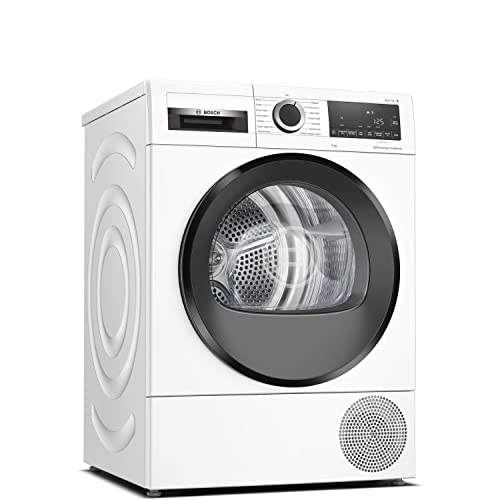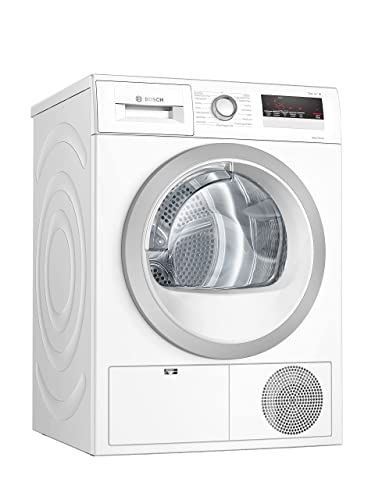10 Meetups About Washer Dryer With Heat Pump You Should Attend
페이지 정보

본문
 heat pump washer dryer heat pump dryer [his explanation] - A Revolution in All-In-One Washer-Dryer
heat pump washer dryer heat pump dryer [his explanation] - A Revolution in All-In-One Washer-DryerA revolution in all-in-one washer-dryers is in progress. We have tested two huge heat pump units that wash and dry in under 2 hours, and require a standard 120 volt outlet.
Heat pump combos cool down the air to eliminate moisture unlike traditional dryers that blow hot air over your spinning laundry. They use less energy, on average in comparison to other dryers.
 What is a heat pump dryer?
What is a heat pump dryer?Heating pumps or ductless drying systems cool the air inside and trap moisture. This is in contrast to conventional dryers that heat the air with gas or electric resistance and then blow the humid, warm air through a vent, which has to be vented outside. They also don't need to vent to the outside because they reuse the moisture and heat within the dryer.
In the end, dryers like these are energy-efficient, saving you money on electricity bills. These dryers are also cheaper to run than conventional ones and last twice as long. They are also eco-friendly which is a major selling point for most consumers.
The dryers with heat pumps that are ENERGY STAR-certified are specifically designed to provide the best performance and efficiency. They come with a variety of features that distinguish them from standard dryers. These include moisture sensors that stop over-drying and stop clothes from fading or shrinking, smart settings to customize your laundry routine, and remote control via smartphone.
They are in addition to being more efficient and cost-effective they are also safer as they don't use a dryer exhaust. This means that there is no chance of lint accumulation within the vent, and possible fires. Heat pump dryers are great for apartment dwellers because they can be used in any location.
They also have the advantage of using a lower temperature than conventional dryers. This helps your clothes retain their shape and Heat Pump Washer Dryer color for longer. This could mean that it takes a little longer to dry your clothing.
They are also simpler to install since they do not use a vent. They can be set up in any space of your house provided that there is access to a drain for water. Moreover, heat pump dryers are more quiet and environmentally friendly than conventional dryers, which makes them a great option for homes with young children or pets.
Heat pump dryers have been popular in Europe for a long time however, they are becoming more popular in the United States. With their remarkable efficiency in energy and cost savings, it's not surprising why more and more homeowners are opting to buy a washer dryer that has a heat pump.
What are the Benefits of a Heat Pump Dryer?
The heat pump washer-dryers consume about half the energy consumption of conventional vented dryers. They are therefore extremely energy efficient and help reduce household electricity bills.
Heat pump dryers, as their name implies, do more than just heat your clothes. They also remove humidity by drawing in ambient dried air and then reusing the air throughout the entire drying process. This helps keep your laundry fresh and prevents wrinkles as well as reducing moisture in your home.
They also help to dehumidify your laundry, which can help reduce the burden on your air conditioning system, thereby saving you money in cooling costs as well. This is a significant benefit for those living in humid climates that tend to frequently run their dryers.
Contrary to traditional vented dryers, which discharge warm, humid air into the atmosphere the heat pump dryers employ a process called evaporative cooling to get rid of the moisture in your laundry. This creates a cooler, dehumidified atmosphere inside your laundry and can be an attractive alternative for homes that don't have the space or money to install a separate duct for venting out moist air.
A heat pump dryer is less harsh on clothing because it does not require the traditional heating element like a vented drying system. Some heat pump dryers never reach their maximum temperature, which keeps your laundry in good condition and secure for longer.
Heat pump dryers cost more initially, but they can save you a lot of money and energy in the long in the long. This makes them a smart choice for consumers who wish to lessen their environmental footprint while reducing their utility costs.
As the popularity of heat pump dryers has grown in recent years manufacturers have been in a position to make them more affordable than ever before. Additionally the technology behind these machines has continued to advance, making them even more efficient and user-friendly. These washer-dryers are an excellent investment and conserve energy and the environment in the long run.
How does a heat pump dryer work?
When it is about laundry, your standard vented dryer is a simple piece of machinery. A sheet metal box that houses an electric motor, heater and fan. A heat pump dryer however, is a different animal. These dryers are stuffed with sophisticated technologies which give them energy efficiency.
What makes them so efficient is that they don't just dry your clothes, but they also pull heat from the air and recycle it back to your clothes. The process starts with a blower that pushes air through fins situated on the cold side, and then fins on the hot side. It might seem odd but why would you waste energy cooling the air and then reheating it? It's an excellent way to save energy.
The re-heated air draws moisture from your clothes and condenses it then the system begins the cycle back to warm up the lint again. The clothes are dried at the same time as with vented dryers but at a lower cost.
The heat pump dryers are advantageous since they don't require vents. They can be put in within any room of the apartment or house, including small spaces such as bathrooms, closets and bedrooms. They're more flexible than a dryer/washer combination because they don't need an outside wall to vent.
The dryers do not need venting but they must drain. This is accomplished through the built-in catch drawer, which can hold water for up to two cycles, or Heat Pump Washer Dryer by connecting the dryer to a hose, and then directing it through a window. This is a minor issue in comparison to traditional dryers that require the cleaning of lint screens every time they cycle and condensation coils to be defrosted manually at least once or twice a month.
The heat pump dryers might be somewhat more expensive now than their traditional counterparts. However, the upfront investment will pay itself off with lower cost of utilities. Many states and local utilities provide incentives and rebates which can reduce the cost of purchasing heat dryers with pumps.
How can a heat pump dryer help save energy?
Like the name suggests, a heat pump dryer reuses energy. It consumes less energy than traditional electric dryers, which are commonly used in many homes. The main reason for this is that it does not directly heat the air. It utilizes the same technology that is used in air conditioning: compressing the liquid (like refrigerant) and then heating the resulting vapour. The vapor is then pushed through the drum for drying and is absorbed by the drum to dry your clothes.
The heat pump's second role is to recycle the heated vapor that flows back through the drum after having passed through the drying cycle. This is known as reversible operation. The heat pump technology pump repeats this process multiple times, capturing heat over and over again. The resulting hot air is then transported into the building and used to heat the building's inhabitants.
Ventless heat pump dryers unlike vented dryers move the moist indoor air through a closed circuit which cools it, suctions out the water, and finally drains into a washer drain pipe or into the floor drain or sink. This lets you avoid the dryer vent completely and also aids in keeping indoor humidity at a minimum, especially in a tightly sealed enclosure for your building.
If required for a particular situation, a heat pump dryer can be utilized in conjunction with an electric evaporator to add hot water to the cooling circuit. This can reduce energy consumption by up to 30 percent.
However, you should know that a heat pump dryer isn't the best choice for every household. The upfront cost is higher than traditional electric dryers and operating savings are not as high for most families. For this reason, Yale Appliance estimates that these models will likely be appealing to "households that have a high use of dryers for laundry and high electricity prices."
There is a major reason for many families to consider using a dryer with a heating element because of the government policy. In the United States you can get rebates which will reduce the price of these appliances. This means that the economics of this new laundry machine is convincing.
- 이전글How To Identify The Right Tommy Hilfiger Bookbag For You 24.04.30
- 다음글Who Is Responsible For An How Do I Get A Replacement Key For My Audi Budget? Twelve Top Ways To Spend Your Money 24.04.30
댓글목록
등록된 댓글이 없습니다.


 블로그체험단 바로가기
블로그체험단 바로가기